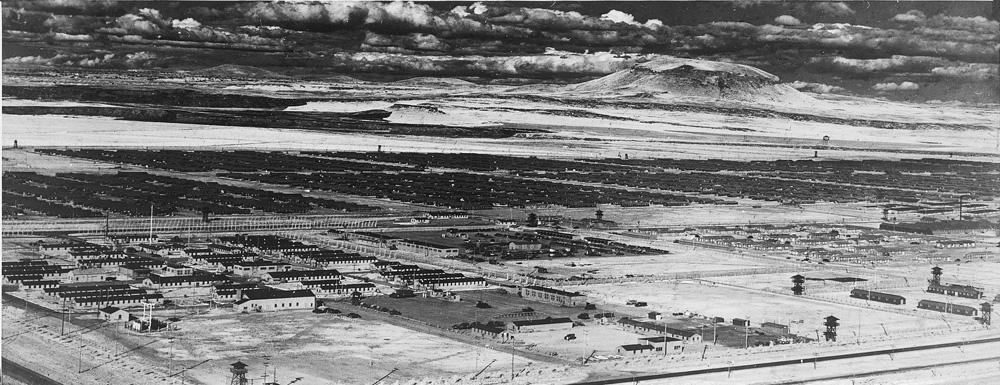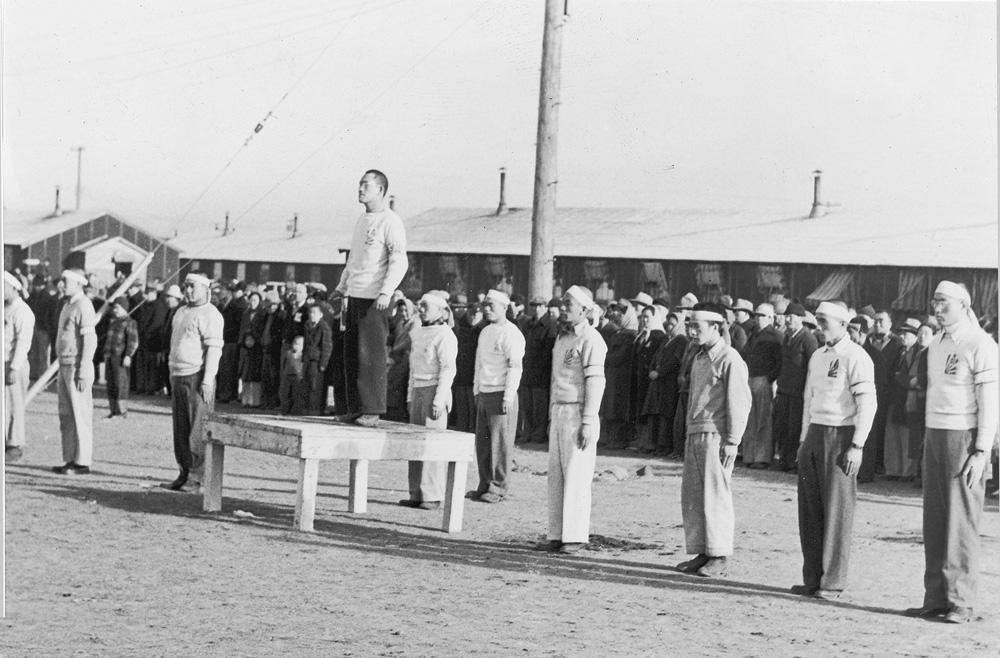In 1942, after President Franklin Delano Roosevelt signed Executive Order 9066, Japanese Americans were ordered to leave the West Coast of the U.S. for confinement in concentration camps, which the government referred to by the euphemism “relocation centers.” These ten camps were administered by a civilian organization called the War Relocation Authority. More than 110,000 Japanese Americans were incarcerated in these camps — two-thirds of them were U.S. citizens, the others were first-generation immigrants forever barred from U.S. citizenship under racist exclusion laws.
Registration
In February 1943, incarcerated Japanese Americans were forced to fill out an Application for Leave Clearance, which soon became known as the “loyalty questionnaire.” It included two questions which would have devastating consequences:
Question #27:
“Are you willing to serve in the armed forces of the United States on combat duty wherever ordered?”
Question #28:
“Will you swear unqualified allegiance to the United States of America and faithfully defend the United States from any or all attack by foreign or domestic forces, and forswear any form of allegiance or obedience to the Japanese emperor, or any other foreign government, power, or organization?
More than 12,000 incarcerees were branded by the government as “disloyal” for not answering these questions with a simple “yes.” But there were many reasons for these different responses, which had nothing to do with any threat to the U.S. For many, answering “no-no” was a form of protest against a government that had betrayed its own citizens with racist incarceration. But “no-no” was also a matter of survival for families with immigrant parents who would have been left stateless by forswearing allegiance with Japan.
Segregation
Of the ten WRA camps, Tule Lake had the highest number of “disloyal” responses. The camp administration blamed resistance to registration on “pro-Japan agitators.” On July 15, in response to a Senate resolution, the WRA designated Tule Lake as a segregation center where the “disloyal” incarcerees from the other nine WRA camps would be resettled, with the “loyal” to move elsewhere. Ultimately, only the first stage of segregation was fully carried out. By early 1944, with the influx of 12,000 “disloyals” transferred from other camps, Tule Lake Segregation had become an overcrowded, maximum-security prison.


